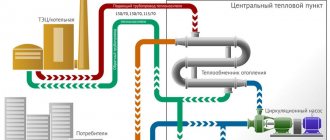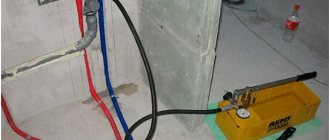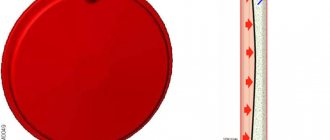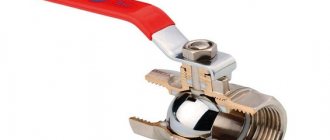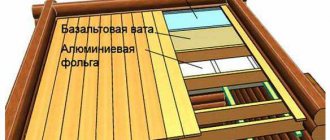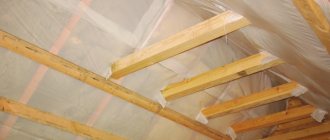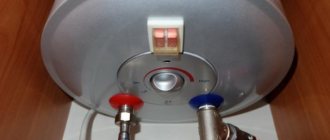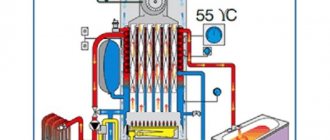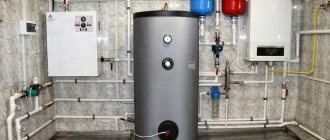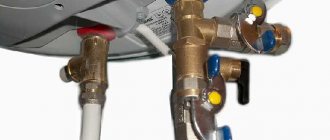Do I need to drain the water from the water heater?
There are so many electrical appliances in every home that it is difficult for a person to remember how to operate each of them, and some require regular maintenance. For example, a boiler installation may require draining or do without this procedure, depending on the model of the device, the material from which it is made and additional conditions. If you turn to specialists, they will confidently confirm that it is necessary to carry out this procedure periodically and will even explain how to drain the boiler. Turning to experts requires costs and to save money, you should understand this process yourself. Remember that these actions become mandatory in the following cases:
- In places where there is a sharp change in climate. It is better to drain twice a year: before the onset of frost and after it. This action minimizes the risk that the tank will lose its seal if the water in it turns to ice.
- If an emergency occurs at a waterworks. After completing the repair work, it is worth carrying out the procedure.
- In the event of a prolonged absence of water supply or if the water is heavily contaminated.
If an accident occurs or a long outage is imminent, you need to understand that water will not flow into the boiler until the water supply is restored. It is advisable to remove the residues from the boiler system or completely use the remaining resource. Sometimes the device itself can be misleading. The following picture shows two taps, but they are both blue. In this case, difficulties arise.
Boiler with two blue taps Source santehnikportal.ru
In what situations should you drain the water from your water heater?
Most manufacturers indicate in the instructions for their products that the tank of boiler systems should not be emptied unless necessary and should not be left empty for a long time. However, there are several situations when this will have to be done:
- Preservation of the device for the winter. This is relevant for a device used in a summer cottage. If the water is not drained from the system, it will freeze under the influence of low temperatures, which can cause the internal parts of the water heater to rupture.
- Cleaning the heating elements or tank from dirt. When the unit is rarely used, the liquid in it may stagnate. Bacteria that are dangerous to human health will begin to actively multiply in it. Cleaning must be carried out at least once a year.
- Repair. In the event of a malfunction in the system, troubleshooting is only allowed when the tank is empty.
If the device is not used for a long period of time, but remains in a heated building, then it is not advisable to drain the water. When air gets inside the system, metal corrosion processes proceed faster, and the unit is more likely to become unusable.
Signs that urgent cleaning of the boiler is required are: a weakening of the water pressure, an increase in its heating time, the appearance of uncharacteristic noise, an unpleasant odor, and leaks.
Features of heating devices
Each device has its own features of use and assembly nuances. Before carrying out any measures to repair equipment or take preventive actions, it is worth reading the instructions that came with the equipment. This manual will give a complete understanding of what valve or lever means. Before figuring out how to drain the water from the boiler, it’s a good idea to familiarize yourself with the nuances of the issue:
- First, inspect the room where this device is located. If the boiler room or utility room is constantly heated, then this process is not necessary, even if the homeowners are going to leave for a long time.
- If the boiler structure is made of stainless steel, then corrosion of the metal in a humid environment will occur much faster, and periodic draining is not necessary.
Stainless steel boiler Source stroy-podskazka.ru
- The copper container sometimes needs to be completely emptied of water. Copper is very sensitive to hard water and if a person leaves for a long time, it is better to leave the tank empty.
- If the water supply comes from a central water supply and not from a well, then draining is not necessary, because the bleach contained in the water will not allow bacteria to multiply and prevent the appearance of an unpleasant odor. Wells do not have this property.
- If owners of a water heating system use a well, then periodic draining is necessary. This will prevent water stagnation and rotting.
If stagnation does occur, then the boiler device needs to be flushed. To do this, you need to turn on the tap and drain water from the tank for a long time until the cleaning occurs. After this, the new water in the container must be heated several times.
After complete drainage, new water needs to be heated several times Source sovet-ingenera.com
See also: Contacts of construction companies that specialize in working with engineering systems of a private home
How to drain water correctly
The drainage features depend not so much on the brand of equipment (Gorenje, Electrolux, Atlantic), but on the type of connection. Let's look at how to carry out work on popular boilers.
Important! Before starting, unplug the boiler.
Water heater "Termex"
You will need a gas wrench and a drain hose.
Progress:
- Use the key to turn off the cold flow (2).
- To avoid vacuum, open the hot tap (7) on the mixer.
- Let the water drain to the mark. This will happen within 2 minutes.
- As soon as the liquid leaves, do not close the mixer (5). Open the tap and drain the water (4) or tighten the nuts at the cold flow inlet.
- Connect a rubber hose to the heater thread. Lower its other end into a sink or deep container.
- To drain the residue, disconnect the hot water outlet from the housing.
- After removing the nut, the contents will finally drain from the system.
The method is suitable for small appliances with a maximum capacity of 20 liters. Watch a video on how to do the work yourself:
Ariston technology
Prepare tools for work: 32 and 24 mm open-end wrench, slotted screwdriver, 4 mm hexagon.
- Turn off the water.
- Open the hot stroke on the mixer, this will reduce the pressure.
- To allow air to enter the housing, open the tap where the hot stream is supplied.
- Connect the hose and open the drain tap.
- You need to pour out all the liquid from the boiler.
This method is suitable for 50 and 80 liter boilers.
Through safety valve
We discussed why a safety valve is needed in a separate article. The part is used to relieve excess pressure and drain liquid. This type of boiler connection is made after purchasing a shop technician. The service is inexpensive, but when it is necessary to perform a drain, the user will encounter problems.
What should be done:
- Turn off the water.
- Open the mixer and allow the remaining liquid to drain.
- Turn the lever on the drain valve and wait until the contents drain completely.
You will have to wait a very long time, especially if you have a 100-liter boiler. If you have a valve installed without a lever, then you will have to mechanically remove the water.
The part cannot be dismantled, so you can press out the spring yourself, as shown in the picture:
More details are shown in the video:
To drain the contents completely and at the same time check the condition of the heating element, do this:
- Unscrew the bottom cover screws.
- Disconnect the wiring.
- Unscrew the flange bolts, sometimes it is enough to turn it counterclockwise.
- Unscrew the flange together with the heating element.
- At the same time, the remaining liquid will drain.
Inspect the element and descale it if necessary.
Recommendations from experts
To prevent independent work from causing damage, follow the recommendations:
- Before starting, unplug the device.
- Before you start draining, look at the instructions and study the design and connection features.
- Wait until the liquid cools to avoid burns.
- If an unpleasant odor appears, you need to run about 100 liters of water through the boiler every two months.
- Before connecting to the network, check that the tank is full.
Now you know how to do the work yourself. The metal body is susceptible to corrosion and salt deposits. But with proper care, the boiler will serve you for many years. Follow our tips and install filters to improve water quality.
Methods for draining water from a boiler
There are several options that will tell you how to drain the water from the water heater. The easiest way is to drain the liquid through the cold opening of the incoming hose. In this case, it is necessary to open air access through the “hot” hose. This is easy to do, but boiler designs do not always allow the procedure to be carried out without damaging the container. In this regard, let's consider other options.
On a note! When tightening nuts, use a gas wrench or wrench.
A gas wrench is very suitable for unscrewing nuts Source vteple.xyz
Safety tap
The first way to drain water from a boiler is to carry out the procedure through the safety valve of the device. Every heater has this valve if the installation was carried out according to all the rules. The trigger mechanism is located at the entrance to the tank, where the cold pipe or hose is located. It is designed for emergency drainage when the pressure is too high. The connecting screw is easy to unscrew. This is how many people check the functionality of the device. If water does not flow out when opened, it means that a blockage or breakdown has occurred and requires cleaning or replacement.
By opening the valve of the emergency device, drainage occurs easily. It is worth worrying in advance about the container where you will need to collect the liquid. The water speed will be low. If the water heating tank is large, for example, 80 liters, then emptying it will take at least two hours. If there is a blockage, the process will take twice as long. A person can drain the water and at the same time make sure that there is no blockage.
On a note! If the blockage is severe, it will be impossible to remove the liquid in this way.
When draining water, you can also clean the pipes Source santehnikportal.ru
How to drain water from a water heater with different types of connection
How fast and simple this process will be depends on the method of connecting the heating apparatus.
Let's consider several options for joining and the algorithm of your actions in each of them. To work you may need:
- Adjustable wrench.
- Hose for draining water.
- Large basin or bucket.
The standard connection type is recommended by manufacturers for a reason. With this method, draining water from the tank is as easy as shelling pears. The diagram shows all the connections; in particular, you can see that a tee with a tap is installed between the tank and the safety valve (see figure number 4).
- Boiler.
- Shut-off valve for the water supply system.
- Safety valve.
- Valve for draining liquid from the tank.
- Hot water tap in mixer.
- Cold water tap.
- The mixer itself.
- Shut-off valve.
Process description:
- Disconnect the device from the power supply.
- Shut off the cold water supply valve to the boiler (number 2 in the figure).
- Open the hot water tap and drain it from the tank. Leave the tap open to relieve pressure in the container.
- We open the tap on the tee, having first put a hose on it. We wait until the water flows out.
- Now turn off the tap at the outlet of the heater (in the figure under the number
 and close the mixer tap.
and close the mixer tap.
That's it - your water heater is now empty.
Sometimes minor adjustments are made to the standard connection diagram. For example, a shut-off valve is not installed at the outlet of the boiler, or an additional valve is installed on the hot water pipe to allow air to enter the tank. In the first case, the algorithm of actions remains the same, but you just need to keep in mind that if there is no shut-off valve at the outlet of the tank, you cannot use the water supply until you complete all the work.
In the second - after the third step in the description of the process, you need to open this tap.
A simplified connection type can please the consumer with quick installation of the water heater immediately after purchase. However, this joy will only last until the moment when you suddenly need to drain the water from the tank. Installers from companies are guilty of this connection method: for them it is fast, for the owner of the boiler it is cheap.
With this method of connecting the water heater, the algorithm for draining water from the tank will differ from the previous one due to the fact that the would-be specialists who connected the device did not take care of installing the drain valve.
Process description:
- Turn off the device.
- We turn off the liquid supply valve to the boiler, if at least it is installed. If not, there is a common riser throughout the apartment. Open the hot tap on the mixer: release the water and pressure in the tank.
- We substitute some container and unscrew the flexible hose to release the hot liquid from the tank - an adjustable wrench will help you. We wait until the water drains from it - usually there is not a lot of it.
- Unscrew the flexible cold water supply hose and open the lever on the safety valve. We wait until the water drains.
The draining time directly depends on the volume of the tank. For example, a container of 80 liters will take at least an hour to drain.
It happens that the safety valve is installed without a lever. Then the process of draining water turns into an operation requiring the intervention of third parties.
One person, of course, can show the wonders of acrobatics by holding a bucket or basin with water flowing into it and at the same time, using available means, pressing a spring in the safety tank.
But it’s better to play it safe and invite a friend to help: talking even two hours will pass faster and you’ll have someone to discuss the skilled installers with.
In this video you can see how to easily and quickly drain water from an Ariston boiler:
These are the steps you will have to take in order to empty the storage tank of liquid. In principle, there is nothing complicated when the boiler is installed correctly, but if not, then you now understand that in some matters, saving can be not only inappropriate, but even harmful.
Complete emptying of the boiler tank
Remember that any of the above drainage options is not perfect, and not everyone allows you to completely drain the water from the boiler installation. To completely empty the tank, you will need to disassemble the water heater:
- After the liquid has partially drained, you need to unscrew the cap, which is located at the bottom of the tank. On most boiler systems it serves only as a decoration.
- Make sure that the device is not connected to electricity. If draining can be done with a connection to the network, then disassembling the device is strictly forbidden.
- The cover cannot be removed completely, so the following steps must be carried out while holding it. Very carefully disconnect the wires from the warning light.
- Then it is necessary to disconnect the electrical wiring from the installation body. Experts recommend photographing the location of the wires so as not to get confused later during reassembly.
- Then you need to unscrew the flange. This mechanism must be rotated counterclockwise. Residual water will begin to flow, so unscrewing must be done slowly so as not to strip the thread. By the pressure it will be possible to understand that there is little liquid left and then complete the final unscrewing.
Draining water from a boiler may seem difficult at first glance Source www.timberk.ru
Circumstances in which it is useful to drain water
While using an electric water heater, it becomes necessary to drain the water from it. This procedure will need to be done if the device fails, for example, the heating element deteriorates. Quite often, boilers are installed in dachas or in buildings that the owners use periodically. At other times, the boiler remains in an unheated room. In the first case, draining the water is necessary, since all the equipment requiring repair is located at the bottom of the device. At the time when the heating element, the anode is changed, or the accumulated dirt is cleaned, the housing becomes depressurized. If the water is not drained, it will all spill out onto the floor. In the second case, the water is drained to prevent the water in the storage tank from freezing. One of the properties of water is to increase in volume when it freezes. Naturally, it can rupture the tank. In any other situation, the water heater must be filled with water. This will protect the tank from damage.
Removing residual water
No matter how long and carefully you drain the water, a small part of it will remain in the boiler.
To completely drain the tank, you must:
- Drain the water using any of the above methods.
- Carefully remove the protective cover on the bottom of the tank, which is usually secured with screws.
- Holding the base of the cover, you should carefully disconnect the wiring that is there in order to completely remove this element from the main part.
- Find the flange that serves as a support for the internal ten, and then carefully loosen the nuts on it. Water will leak, keep this in mind, so do everything slowly, gradually increasing the speed.
- When unscrewing the nuts, hold the flange with your hand. After removing the last nut, carefully pull the tench out.
You may be surprised at the condition of your heater and what kind of sediment has formed in the boiler. Sometimes it is impossible to get a ten, as it becomes overgrown with scale, increasing in size.
Expert opinion
Grebnev Vadim Savelievich
Heating system installer
It is not recommended to drain a full tank by unscrewing the flange. There are more gentle methods that will not harm your equipment.
Features of drainage from individual manufacturers
Let's look at how to quickly drain water from water heaters of some brands, taking into account the manufacturer's recommendations and the features of their design.
For Termex 100, 80, 50, 30 liters, Real, Superlux, Aquaverso
After completing steps 1 - 4 above, disconnect the safety valve or open the drain valve on the tee. The valve is easy to unscrew; to do this, you need to remove the nut connecting the pipe to the valve, and use an adjustable wrench to disconnect the valve from the pipe in a few turns.
Place a rubber or plastic tube on the freed fitting, the other end of which is lowered into the sewer. Among the Termex line there are models that have a drainage pipe; in this case, you should remove the plug from it and connect a tube or rubber hose to it, through which the liquid will flow.
Draining water from a Thermex water heater
Heaters Ariston ABS BLU ECO 50-80-100 liters, Polaris have a drain valve on the tee, which is located between the safety device and the fitting. To drain, open the tap after connecting a drainage pipe to it, which is discharged into the sewer system.
On boilers Combustion, Oasis, Atlantic, Etalon, Haier
drainage is carried out through a non-return safety valve. Using a screwdriver, unscrew the protective screw on the valve flag and lift it up. Combustion units have valves with both a lever and a rotating head, depending on the modification.
A drainage tube is placed on the spout of the device, through which water flows into the sewerage system or into some container. In this case, leakage from under the rod is allowed.
It often happens that the liquid does not drain. This means that the valve is clogged with scale from the tank. In this case, washing it will help. Is it necessary and possible to install a tee with a tap for draining water on these models?
The manufacturer allows the additional installation of a tee with a tap between the protective device and the bushing for faster draining. If the atmospheric pressure is sufficient for the draining process to begin, you need to lower and raise the flag from time to time. If it is not enough, you need to force air into the unit.
Boiler with tee for quick drain
To do this, you need to unscrew the output connection (American females, fittings) located as close as possible to the heater. If this is not possible, you should put a hose of the appropriate diameter on the mixer and blow forcefully into the hose or use a pump for this purpose.
Features of draining the Garanterm, Elektrolux models - disconnect from the power supply, drain the hot water through the mixer, close the cold water supply valve, connect a rubber or plastic hose to the drain valve or cold water supply pipe, first unscrew the safety device, open the hot water tap on the mixer and drain valve, and drain the water into the sewer.
How to quickly drain water from a Timberg water heater
the unit has a separate drain pipe located at the bottom and right of the unit. A drain is placed on the pipe with a discharge into a container or sewer. Draining can also be done using a safety device.
Experts believe that for faster and more reliable drainage, it would be correct to install a tee with a valve in front of the valve and connect to the sewer system using metal-plastic pipes.
Draining through a hose into the sewer
When draining the liquid using any of the above methods - using a safety valve, a valve on a tee, or a separate pipe - it will not be possible to drain all the liquid from the tank.
Even if nothing is drained from the drainage device, a certain amount of water still remains there, approximately 8 liters in a 50-liter water heater. This should be taken into account if you need to change the heating element or when you drain the water from the water heater for the winter in the country.
 and close the mixer tap.
and close the mixer tap.